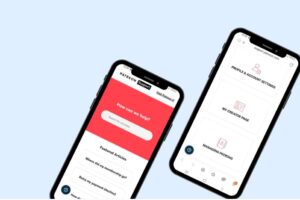While buying a new phone, you begin to notice more and more often that the number of apps already installed on the gadget far exceeds your expectations. This kind of bear favor can be very annoying, don’t you agree? Especially if there’s no delete button in the Android settings. But this article tells you the easiest and fastest ways to uninstall apps from an Android phone.
Easy Ways How to Cope with Unnecessary Apps
Under no circumstances should you keep unnecessary software in your phone that wastes Internet traffic and loads the processor. Instead, leave what you need and remember: less is better. The fewer apps you install, the more stable and faster your Android will be. And you’ll have more space for files and music. So don’t hesitate to delete everything you consider unnecessary from your smartphone since a modern device cannot be rendered unusable by uninstalling applications in the standard way. So, ready to uninstall?
# 1 Classic Way or Proper Deletion
For ease of understanding, allow a little generalization and say that any Android app consists of 3 parts: files of the software itself, working data, and the cache. Usually, if you want to uninstall some app, it’s enough to use the classic features provided by the system for uninstalling most of the unnecessary software. So what does it look like in practice?
🗑️ First, go to settings.
🗑️ Then open the Applications Section.
🗑️ Then find the app you want to uninstall and open its properties.
🗑️ Next, clear the cache and erase the data. If you don’t do these actions, over time, this remaining trash in the form of the old cache can eat memory, which is always lacking.
🗑️ Finally, press the Delete button.
But sometimes, there are situations where all the apps are needed, but you have to delete some of them because you don’t have enough free space in your phone’s memory. In that case, you can connect a cloud drive to your phone. If you want to know how to do it, use the online service Howly. Here you can contact a qualified and experienced expert who explains how to solve this issue in an easy-to-understand way.
# 2 Clever Way for the Most Stubborn Apps
Some applications (by default) don’t appear in the software list. Another part of applications has no delete button when opening their properties, which may indicate that such an app is a system one (in 99% of cases), and its removal is highly undesirable. However, what can be done with it if this stubborn software eats up Internet traffic?
🗑️ First, go to the Search bar for apps in the menu screen and click it. Now you can enable the display of hidden system applications (such as, for example, Download Manager).
After these actions, the app stops working until you turn it on again, and it won’t use your RAM, burden your CPU, and waste traffic anymore. However, if something goes wrong, check over here, and your Android App problems will dissolve like clouds in the sky. Here you’ll find qualified experts who solve various issues of numerous Android phone users daily. You can contact them anytime to get a quality consultation, and it doesn’t matter if it’s early morning or late night.
# 3 Effective Way to Deal with Inconvenient Apps
Some apps are pretty inconvenient to work with: they either don’t uninstall or don’t stop, or start themselves and continue eating traffic. In these cases, it’s recommended to resort to special utilities that have forced deletion/stop modes. Of course, we are talking about programs like CCleaner or Clean Master. As for CCleaner, it’s an excellent app for Android which helps optimize and speed up your phone.
As for the subject of the article, CCleaner allows you to easily and quickly delete several applications simultaneously with all cache and free up RAM. In addition, it has a particular mode of forced termination, which is also very valuable. Finally, thanks to a simple and intuitive interface, you can quickly delete or stop an unnecessary application. All you have to do is:
🗑️ Open the Manage Applications tab.
🗑️ Then, you can check the boxes of the applications you want to remove.
🗑️ Finally, confirm the operation.
After all, by opening the properties of any application, you can simply forcibly terminate it, and you can do it even with most system applications. However, remember never to uninstall applications you don’t understand. You could damage your smartphone’s operating system. Furthermore, if we talk about getting root rights or using custom firmware, they can cause many applications to become inoperable. For example, applications related to Internet banking may stop working.
# 4 Factory Reset: When Nothing Else Works
In some cases, no tricks help to return the phone to normal mode, for example, when infected with adware or viruses. To restore the phone, you can try to reset it to the presets, i.e., return it to the factory state, when it only has the software that the manufacturer installed. So it’s necessary to perform the so-called Hard Reset. After that, all settings and data on the phone will be removed (including phone book, files, and correspondence history). Thus, before doing it, you should save everything you need in a backup.
Conclusion
Today’s reality is that Android smartphone manufacturers love installing uninstallable built-in apps on their gadgets. It’s good when they are helpful, but in most cases, they are just trash, taking up space and annoying with their ads. Fortunately, there are ways of uninstalling such apps from an Android phone. And if you carefully follow the instructions, everything will work.
In addition, be sure to backup your photos, music, videos, and other essential data from your smartphone’s memory before you do some actions in the system settings. And, of course, don’t forget to contact a professional if the slightest malfunction with your gadget occurs, especially if there is an opportunity to do it online from the comfort of your home in a super short time.






![YouTube SEO in 2024 [Definitive Guide]](https://getpixie.com/wp-content/uploads/2024/02/shutterstock_1684828252-1-150x150.jpg)








